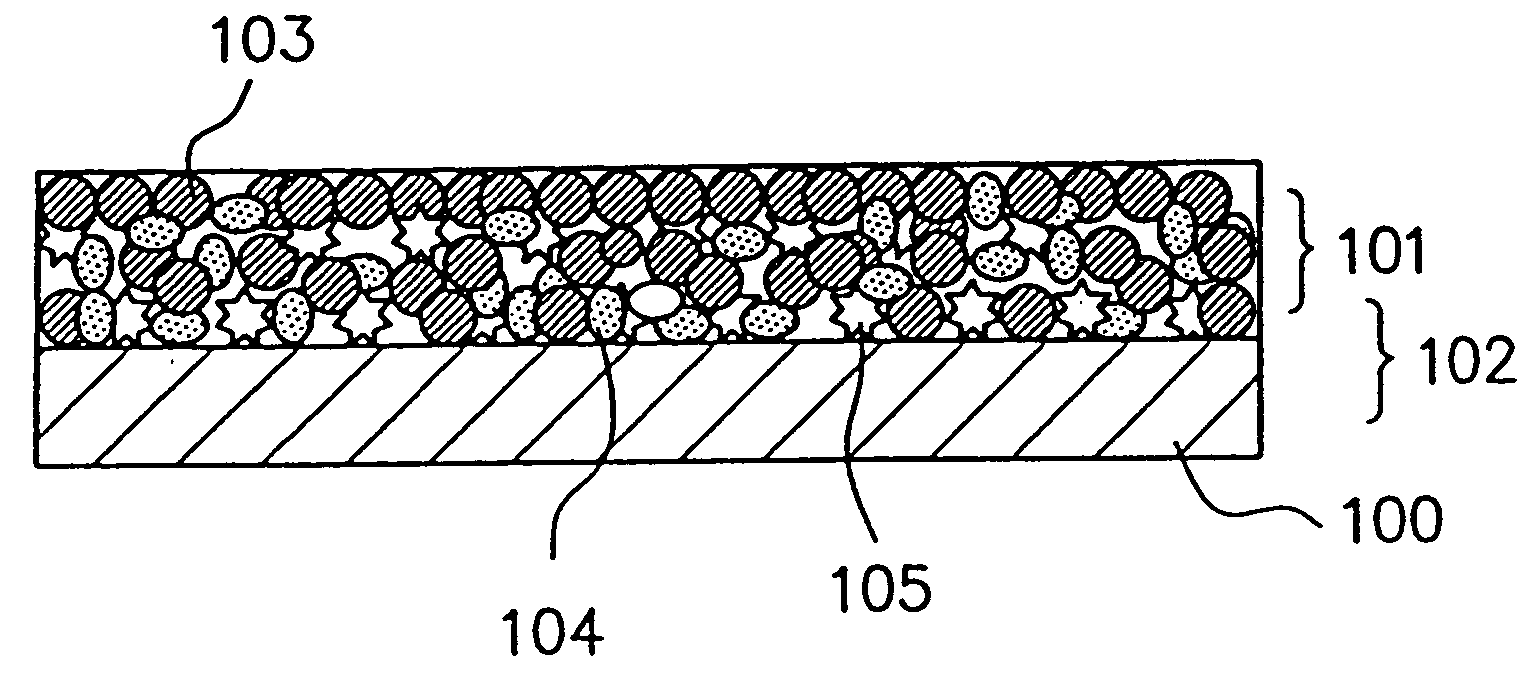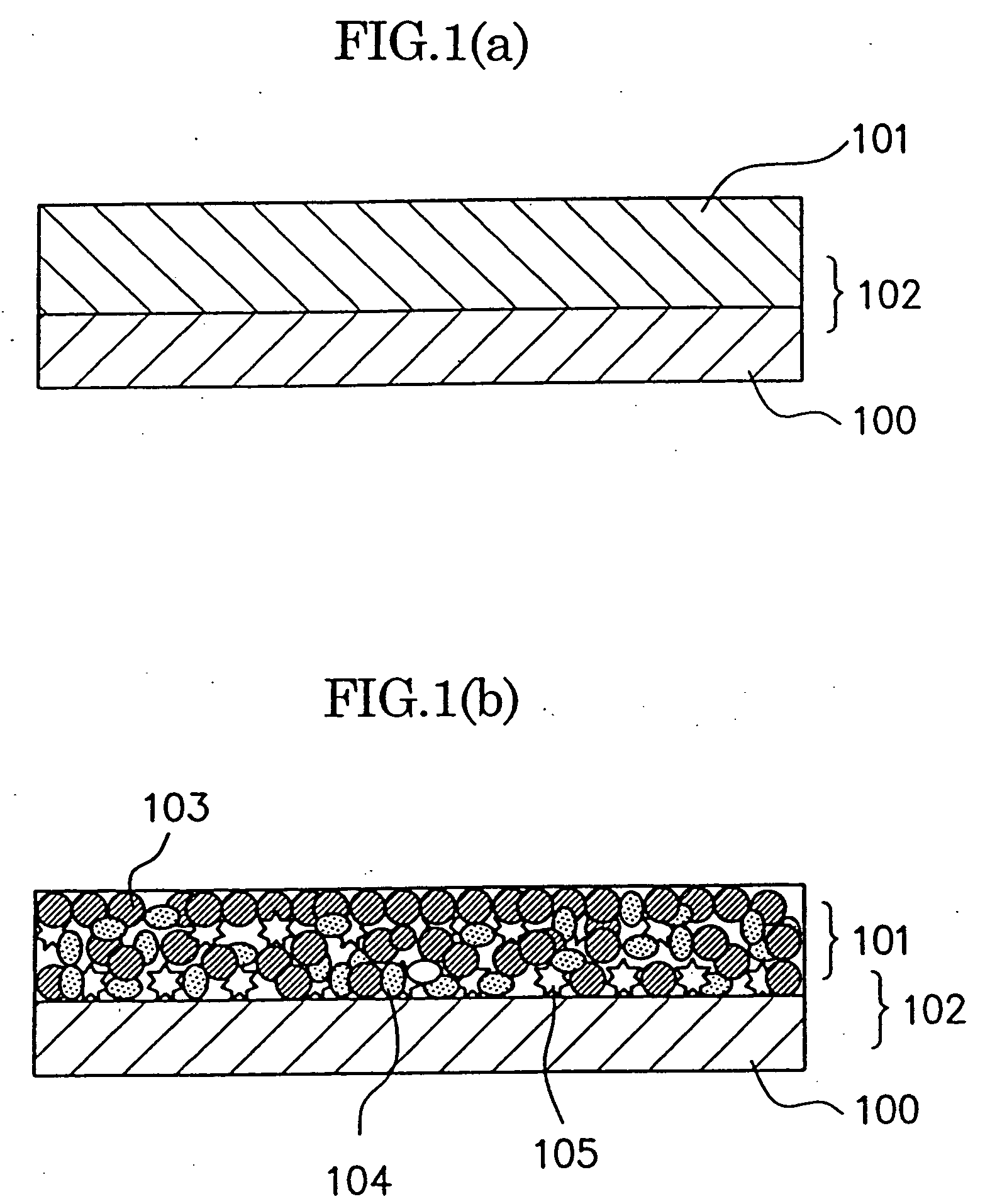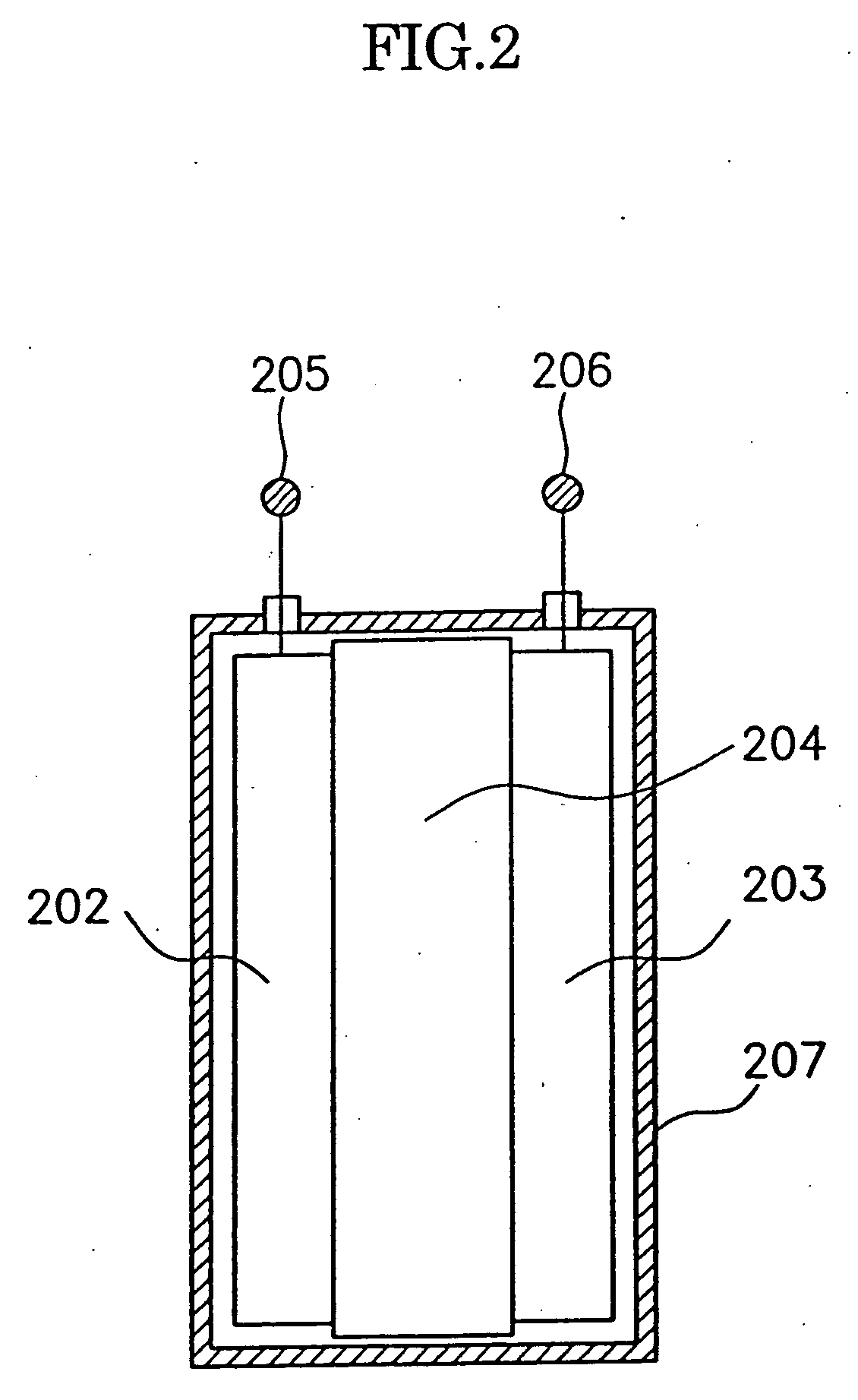Electrode material for anode of rechargeable lithium battery, electrode structural body using said electrode material, rechargeable lithium battery using said electrode structural body, process for producing said electrode structural body, and process for producing said rechargeable lithium battery
a rechargeable lithium battery and electrode structure technology, applied in the direction of boron compounds, alkali metal oxides/hydroxides, boron compounds, etc., can solve the problems of difficult lithium ion batteries, short internal space between anodes and cathodes, and unavoidable problems, etc., to achieve long charging and discharging cycle life, high energy density, and high capacity
- Summary
- Abstract
- Description
- Claims
- Application Information
AI Technical Summary
Benefits of technology
Problems solved by technology
Method used
Image
Examples
example 1
1. Preparation of an Alloy Powder (Particulate) as an Anode Constituting Material:
[0209] A powdery Sn material having an average particle size of 10 μm and a powdery Co material having an average particle size of 3 μm were mixed at an elemental ratio of 20:80 to obtain a mixture. 100 g of the resultant mixture and 12 Kg of chrome-made rigid balls having a diameter of 19 mm were introduced into a vessel with a volume of 3 liters made of a chrome steel (comprising 85% Fe-12% Cr-2.1% C-0.3% Si-0.3% Mn) provided in a vibration mill Model MB-1 (produced by Chuoh Kakohki Kabusiki Kaisha), where the inside atmosphere of the vessel was substituted by argon gas, and the vibration mill was operated for 10 hours to obtain a Sn—Co alloy powder.
[0210] A sample of the resultant alloy powder was subjected to composition analysis by way of X-ray microanalysis (XMA) and inductively coupled plasma emission analysis (ICP). In the ICP analysis, there was measured only 0.4 atomic % of an impurity pri...
examples 2 to 6 and reference examples 1 and 2
[0235] As shown in Tables 1 and 2, there were prepared a plurality of Sn—Co alloy powders in the same manner as in Example 1, except for changing the elemental ratio of the powdery Sn material and the powdery Co material in each case.
[0236] Using each of the Sn—Co alloy powders obtained in the above and in accordance with the procedures of Example 1, there were prepared a plurality of anodes, and using each of the resultant anodes, there were prepared a plurality of rechargeable lithium batteries.
[0237] For each of the resultant rechargeable lithium batteries, evaluation was conducted with respect to battery capacity, charge-and-discharge Coulombic efficiency, and charging and discharging cycle life, obtained by performing alternately charging and discharging, in the same manner as in Example 1.
[0238]FIG. 5 shows a X-ray diffraction chart after the treatment by the vibration mill in Example 3. FIG. 6 shows a X-ray diffraction chart after the treatment by the vibration mill in Exa...
examples 7 and 8 and reference examples 3 and 4
[0245] In the following, description showing that the foregoing alloy particulate of the present invention which is suitable for use as an anode electrode material used in a rechargeable lithium battery has a substantially non-stoichiometric ratio composition will be made.
[0246] As shown in Tables 3 and 4, there were prepared a plurality of Sn—Co alloy powders in the same manner as in Example 1, except for changing the elemental ratio of the powdery Sn material and the powdery Co material in each case.
[0247] Using each of the Sn—Co alloy powders obtained in the above and in accordance with the procedures of Example 1, there were prepared a plurality of anodes, and using each of the resultant anodes, there were prepared a plurality of rechargeable lithium batteries.
[0248] For each of the resultant rechargeable lithium batteries, evaluation was conducted with respect to battery capacity, charge-and-discharge Coulombic efficiency, and charging and discharging cycle life, obtained by...
PUM
| Property | Measurement | Unit |
|---|---|---|
| thickness | aaaaa | aaaaa |
| particle size | aaaaa | aaaaa |
| diameter | aaaaa | aaaaa |
Abstract
Description
Claims
Application Information
 Login to View More
Login to View More - R&D
- Intellectual Property
- Life Sciences
- Materials
- Tech Scout
- Unparalleled Data Quality
- Higher Quality Content
- 60% Fewer Hallucinations
Browse by: Latest US Patents, China's latest patents, Technical Efficacy Thesaurus, Application Domain, Technology Topic, Popular Technical Reports.
© 2025 PatSnap. All rights reserved.Legal|Privacy policy|Modern Slavery Act Transparency Statement|Sitemap|About US| Contact US: help@patsnap.com



